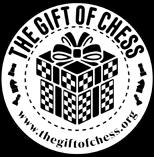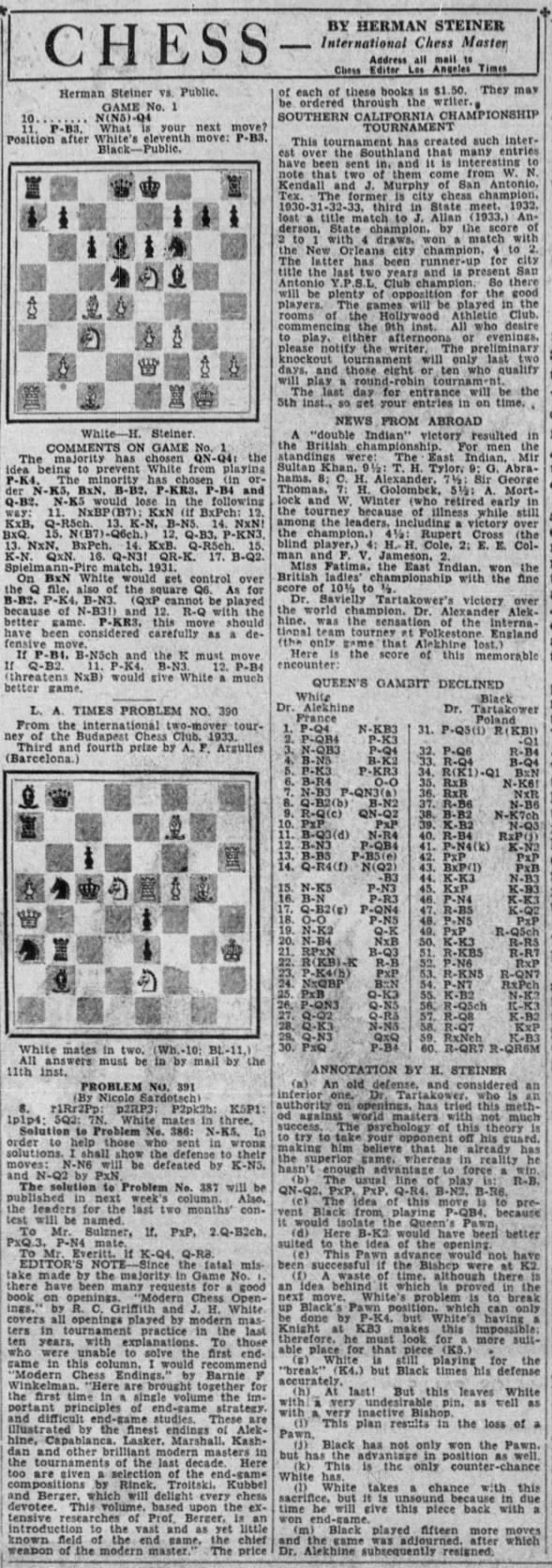 Chess by Herman Steiner 10 Sep 1933, Sun The Los Angeles Times (Los Angeles, California) Newspapers.com
Chess by Herman Steiner 10 Sep 1933, Sun The Los Angeles Times (Los Angeles, California) Newspapers.com
The Los Angeles Times Chess by Herman Steiner, Sunday, September 10, 1933, Los Angeles, California L.A. Times Problem...
Posted by Bobby Fischer's True History on Wednesday, April 28, 2021
L.A. Times Problem No. 392 from the international two-mover tourney of the Budapest Chess Club, 1933. Fifth and sixth prize by L. Schor. White mates in two.
FEN 3Q4/r3p3/p7/3NkP1R/r7/1Pp2q2/p3N1B1/K3R3 w - - 0 1
Key: Q-N6/Qb6
Only one person failed to solve this problem. His answer, N-B4ch, would be answered by K-Q5, and there is no possible mate.
The Los Angeles Times Chess by Herman Steiner, Sunday, September 10, 1933, Los Angeles, California L.A. Times Problem...
Posted by Bobby Fischer's True History on Wednesday, April 28, 2021
Misprint (above) in FEN
The Los Angeles Times Chess by Herman Steiner, Sunday, September 10, 1933, Los Angeles, California L.A. Times Problem...
Posted by Bobby Fischer's True History on Wednesday, April 28, 2021
L.A. Times Problem No. 393 by Percy Bowater, Pasadena. White mates in three.
FEN 1b6/1K6/N3p3/1N1kp3/P1q3Q1/8/B1Pn4/8 w - - 0 1
Key: Q-R4!/Qh4
Quite a lot of solvers were fooled by a very strong try. Q-K2, but the answer to that is B-R2! This strong move defeats all possibilities of mating in three moves.
In Game No. 1 the given move has been entirely different than the theory advised. I shall therefore publish a few games on this opening which have been played in some of the international tournaments in which I have participated.
Played in Stubnyansky Teplice (Czechoslovakia, 1930).
Herman Steiner (White) vs. May (Black)
Slav Defense: Czech Variation, Lasker Variation
Played in the international tournament at Brunn (Czecho-Slovakia, 1931)
Herman Steiner vs Vladas Mikenas
Brno (1931)
Slav Defense: Czech. Lasker Variation (D18) 1-0








































